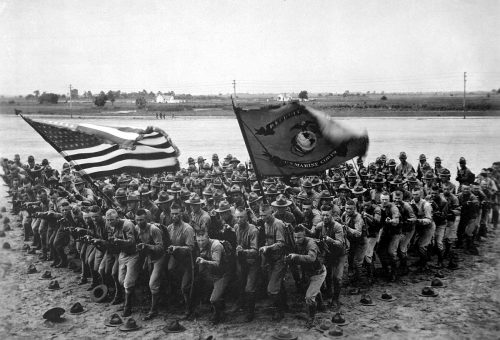
The flying wedge is a play in American football that has been around for over a century and has been used by many teams at the college and professional levels. It is considered one of the most famous plays in football and has been credited with providing the foundation for offensive success over the years.
The origin of the flying wedge dates back to the late 1800s when college teams first began to incorporate it into their game plans. The play has endured over the years and is still seen in modern-day football. It has been used to great success by teams, such as the University of Notre Dame in the early 1940s, and has been a mainstay of many of the most successful football teams in the sport’s history.
In this blog post, we will explore the history and evolution of the flying wedge in American football from its beginnings to the present day. We will discuss the different variations of the play, how it has been adapted to the modern game, and how it can be used.
Contents
1. History of the Flying Wedge
The flying wedge is a play that has been used in American football for well over a century. The original version of the play was used in the 1890s, when Walter Camp, the father of American football, developed the “flying wedge” as a way to gain yards in the open field. The play was popularized by Amos Alonzo Stagg, who used the play during his tenure as the head coach of the University of Chicago’s football team.

The flying wedge was a dominant play in the early days of football, as it relied on the power of a group of blockers forming a wedge to drive the opponent back and open a path for the ball carrier. The play was eventually banned due to the high number of injuries it caused. Despite this, it is still used today as a trick play, with blockers forming the wedge at the beginning of the play before quickly dispersing.
2. Formation and Execution
The formation and execution of the Flying Wedge play were both simple and effective. It consisted of three players or more lined up in a “V” shape; the two outside players were the ends, and the middle player was the fullback. The play was initiated by the quarterback, who handed the ball off to the fullback.
The fullback then ran forward with the ball, protected by the two ends running with the fullback in the “V” formation. The play was designed to create a powerful wedge of blockers to protect the ball carrier and create running lanes. The play was dangerous, however, and was eventually outlawed in most levels of American football in the early 1900s due to its high risk of player injury.
3. Potential Benefits and Risks
The flying wedge formation has been used in football since the late 1800s and has evolved over the years. The potential benefits of using the flying wedge are numerous. First, it provides a powerful force of blockers that can open up holes in the defence, making it easier for the ball carrier to break through. Additionally, the flying wedge can help protect the quarterback or other players in the backfield from defenders. Finally, the flying wedge can also help in setting up plays that can be used later in the game.
On the other hand, there are some potential risks associated with using the flying wedge. One of the greatest risks is that of head trauma, as the flying wedge can involve players colliding against each other at high speeds, which could lead to serious injuries. Additionally, since the flying wedge involves several players moving in unison, it can be difficult to break out of formation quickly. Thus, the opposing defence may be able to react quickly and shut down the play. Finally, the flying wedge can be difficult to set up, as it requires perfect timing and blocking for it to be effective.
4. Examples of Successful Flying Wedges
The flying wedge is an iconic American football tactic that has been used to great effect by teams over the years. It involves a small number of players forming a wedge-like formation and running up the field while the remaining players block their opponents. The wedge can be used to gain yards quickly and to break open the defence line. Here are some examples of successful flying wedges:
- The 2010 Green Bay Packers used the flying wedge to great effect in their Super Bowl win. They formed a line of four players, with one player leading the way and the other three providing the blocking. The play was executed perfectly, and the Packers gained significant yards.
- The 2011 New York Giants used the flying wedge to break open their defence line against the New England Patriots. The Giants ran the play with five players, and it proved to be a success, as the Patriots were unable to defend against the wedge.
- The 2012 San Francisco 49ers used the flying wedge in their Super Bowl victory against the Baltimore Ravens. The 49ers ran the play with a line of five players, and the Ravens had no answer for the wedge, resulting in significant yardage gains.
5. Rules and Guidelines for the Flying Wedge
The flying wedge is an offensive play in American football that has been used since the game’s inception. It involves a group of players forming a wedge shape and running forward together in order to break through the defensive line. Although it can be a very effective play, it is also a potentially dangerous one. Therefore, it is important to follow these five rules and guidelines when utilizing the flying wedge:
- All players in the wedge formation must be on the same team.
- The wedge must be formed behind the line of scrimmage and not cross it until the ball is in play.
- No blocking is allowed beyond the line of scrimmage before the ball is in play.
- Players in the wedge must hold their position until the ball is snapped.
- Players are not allowed to initiate contact with the opposing team until the ball is in play.
Conclusion
All in all, the Flying Wedge is an interesting and effective play that is rarely seen in today’s game. It is a testament to the sport’s history and how it has evolved over the years. Even though it is rarely used today, it is still a risky play that can be executed with the right team and the right set of circumstances. The Flying Wedge remains a part of the rich history of American Football and will always be remembered by fans and players alike.






